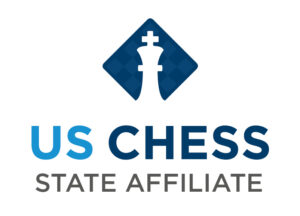Todd Andrews – Kyle Sharpe
2015 Tennessee Winter Open Henry Horton State Park, 17.02.2015
1.d4 d5 2.c4 e5 The Albin Counter Gambit is a strong line to play against unprepared opponents. Todd is NOT an unprepared opponent as we will see. 3.dxe5 d4 For the pawn Black hopes to retard Whites development. Since the White e-pawn is so weak, Black hopes to regain it later. If White tries to hold it with f2–f4, he weakens his white squares and further inhibits his development. 4.Nf3 c5 This move betrays the spirit of Blacks position. The idea is to re-inforce the advanced d-pawn, but at the cost of weakening his own structure. White is certainly much better now. The normal move was simply …Nc6 with some compensation for the missing pawn. 5.e3 Nc6 6.exd4 cxd4 7.a3 This move is seldom played and is somewhat difficult for Black to meet. The problem of the development of his k-side piece can really only be solved by …f7–f6, which does weaken the light squares. 7…Bg4 8.Bf4 g5 Sharp play by Sharpe. He doesn’t want to be a pawn down without play so he throws caution to the wind and weakens his structure even further. If he does not mate Todd early, then his game is lost. 9.Bg3 Bxf3 Unacceptable. Having given up a pawn to keep White cramped, Black simply should not attempt to win back his pawn at the cost of simplification. All that will do is leave material even with Black having a destroyed pawn structure. Bad plan. 10.Qxf3 Bg7 11.Bd3 Nxe5 12.Bxe5 Qe7 13.0–0 Bxe5 14.Nd2 Simple, smart play by Todd. Material is equal thanks to Black’s BAD strategy, but his King is in trouble, his pieces are poorly developed, and his pawn structure is shot. 14…h5 Another wasted move and the position falls apart. Game over. 15.Rfe1 Kf8 16.Qd5 f6 17.Nf3 Rd8 18.Nxe5 fxe5 19.Qxe5 Rh6 20.Qg3 Qg7 21.Re5 g4 22.Rae1 h4 23.Rf5+ Nf6 24.Qf4 Re8 25.Rxe8+ Kxe8 26.Qb8+ Kf7 27.Rc5 Nd7 28.Qxb7 Rd6 29.Rc7 Kf6 30.c5 Qe7 31.cxd6 Qe1+ 32.Bf1 g3 33.hxg3 hxg3 34.Qf3+ Simple play by White. Bad strategy by Black. Understanding the dynamics of a gambit opening is vital. Here Black needed to press for positional pressure, not for regaining his pawn. The only time a gambit player should attempt to regain his pawn is if it leaves him with at least an equal or better position. If one does not desire to play with a pawn down, then do not play a gambit line! 1–0
Analyzed by Henry Robinson


